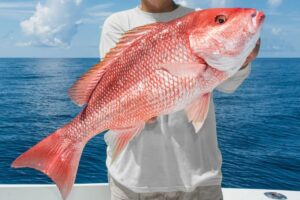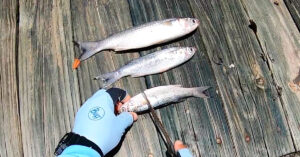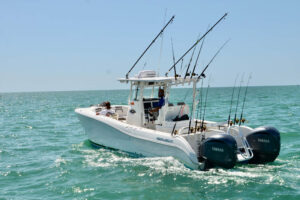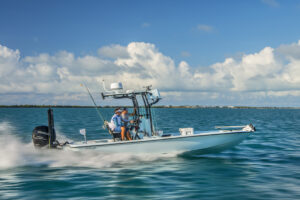Bright, fast, and fierce, Mahi-Mahi—also known as dolphin fish or dorado—are a favorite target for saltwater anglers. Known for their vivid colors, acrobatic fights, and tasty fillets, Mahi offer one of the most exciting offshore fishing experiences. If you’re planning a trip offshore and want to boost your chances, here are the top tips for catching Mahi-Mahi.
1. Know When and Where to Fish
Mahi-Mahi are pelagic fish, meaning they roam the open ocean. They’re found in warm waters around the world and are especially common in the Gulf Stream, Gulf of Mexico, Caribbean, and off the coasts of Florida, California, and Hawaii.
- Season: Peak season typically runs late spring through early fall, when water temperatures rise above 70°F.
- Look for structure: Mahi gravitate to floating debris, weed lines (especially sargassum), current edges, and buoys—anything that provides cover and holds bait.
2. Use the Right Tackle
Mahi aren’t as strong as tuna or marlin, but they’re fast and agile. Use medium tackle that’s light enough for fun but strong enough to handle their speed.
- Rod and Reel: 6’6” to 7’ medium-heavy spinning or conventional rod with a 20–30 lb test line.
- Line: 30–50 lb braid or 20–30 lb mono, with a fluorocarbon leader (30–40 lb).
- Hooks: 5/0 to 7/0 circle hooks work well, especially when fishing with live bait.
3. Use the Right Bait and Lures
Mahi are aggressive feeders and will strike a variety of baits and lures.
- Live bait: Pilchards, ballyhoo, threadfin herring, and small blue runners.
- Cut bait: Squid and bonito chunks also work, especially when chumming.
- Artificial lures: Skirted trolling lures, poppers, and feathers in bright colors (green, yellow, pink, blue) mimic flying fish and squid.
4. Trolling is Key
Trolling is one of the most effective ways to locate and hook Mahi in open water.
- Spread your lures at different distances and depths behind the boat.
- Vary your speed, typically 5–8 knots, and zig-zag through weed lines or near floating debris.
- If you get a bite, keep the fish in the water briefly—Mahi often travel in schools, and more may be nearby.
5. Have a Pitch Rod Ready
When trolling or spotting fish near debris, always have a spinning rod ready with a live bait or lure to cast to cruising or schooling Mahi. They’re visual feeders and often swim right up to the boat.
6. Don’t Leave a Floater Unchecked
If you see a piece of floating debris, buoy, or log, go check it out—even a small branch can hold a whole school of Mahi. Cast near it, drift live bait past it, or troll around it in a circle.
7. Fight and Land with Care
Once hooked, Mahi will jump and twist violently. Keep steady pressure and avoid giving them slack line. Use a gaff for larger fish, but be careful—Mahi are slippery, and they don’t quit until they’re in the cooler.
Final Thoughts
Mahi-Mahi fishing offers high excitement and great rewards. With their rapid growth and abundance, they’re also one of the more sustainable pelagic species to target. Whether you’re trolling weed lines or casting near floating debris, use these tips to turn a good day offshore into a great one.







